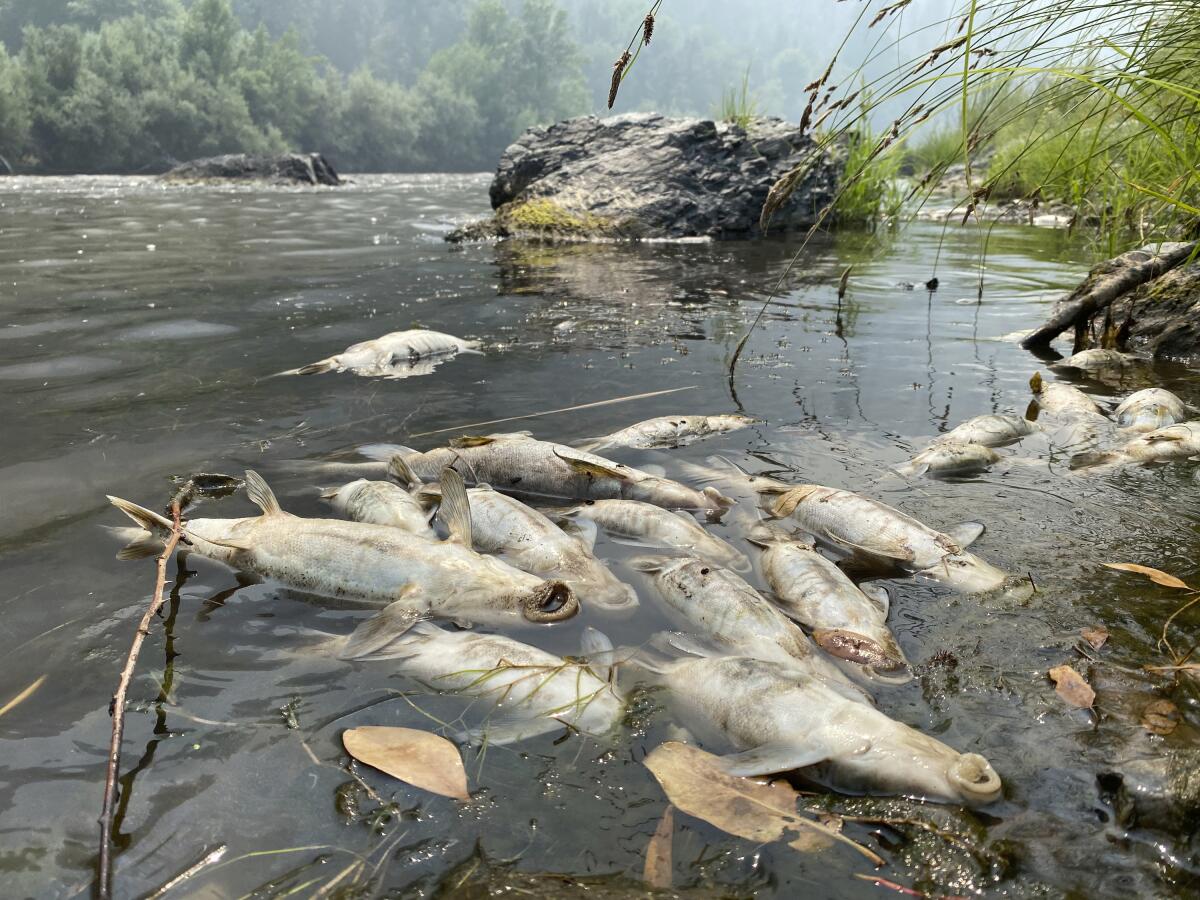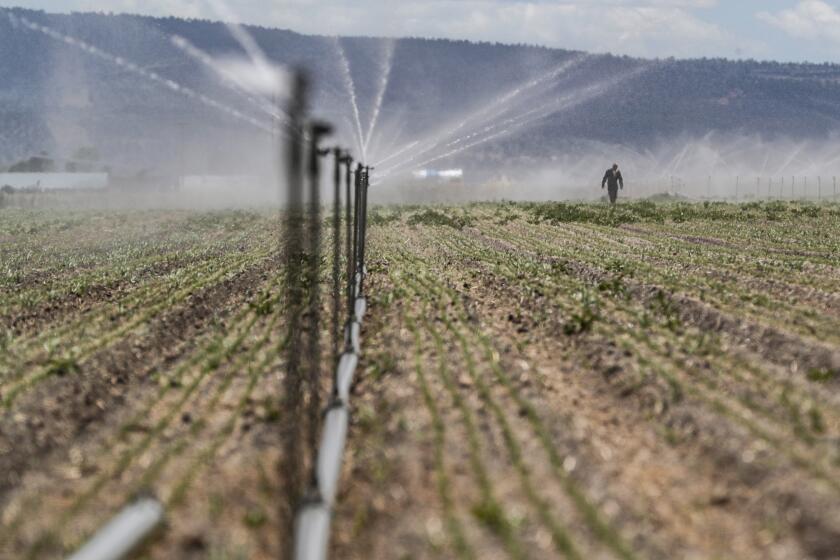Northern California ranchers told to stop diverting water, defying rules amid drought

- Share via
HAPPY CAMP, Calif. — California has warned a group of farmers and ranchers near the Oregon state line to stop diverting water from an area already wracked by extreme drought and a wildfire that killed tens of thousands of fish.
The State Water Resources Control Board issued a draft cease-and-desist order Friday to the Shasta Water Assn., warning it to stop taking water from the Shasta River watershed.
The association has 20 days to request a hearing or the order becomes final and could subject the organization to fines of up to $10,000 a day, according to the state water agency.
The diversions were continuing as of Tuesday, said Ailene Voisin, a state water board information officer.
Since last year, the state agency has curtailed water use in the watershed in order to keep water flowing in the Shasta River, a main tributary of the Klamath River and a nursery for a fragile and federally protected salmon species.
Three weeks ago, salmon and other species of fish turned up dead along a miles-long stretch of the Klamath.
Biologists believe a flash flood caused by heavy rains sent mud and debris from a massive wildfire burning upstream into the river, dropping the oxygen level to zero for a couple of days, said Craig Tucker, natural resources consultant for the Karuk Tribe.
A rough estimate is that 50,000 to 100,000 suckerfish died along with an unknown number of salmon and other species, Tucker said.
Then, beginning on Aug. 17 and 18, the Shasta River flow dropped to about half of the minimum emergency flow requirement of 50 cubic feet per second, the state water agency said.
As of Tuesday afternoon, the flow was at 14 cubic feet per second, according to state figures.
Fifty cubic feet per second is the estimated flow of water necessary for fish in the river, a refuge for salmon that run year-round thanks to cold springs fed by glaciers on Mt. Shasta, Tucker said.
Ranchers appear to be pumping water from the river or diverting springs on or near their land to irrigate cattle pastures or alfalfa fields, Tucker said, although tribal members haven’t ventured onto private property to investigate.
The Shasta River Water Assn. Inc. is a tax-exempt irrigation group, based in Grenada, Calif., that represents about 80 agricultural members. A message to an email associated with the association wasn’t immediately returned Tuesday.
However, in an Aug. 17 letter to the water board, the group said it believed exemptions allowed it to reduce its diversion by only 15% and said it would start pumping water to supply livestock in hot weather and to fill ponds for fire suppression.
“The curtailment has dried the Shasta Valley to the point of endangerment to health and life of the public and residents who live here, with apparent disregard to the livestock and pet health within this watershed,” the letter said.
The concern over low flow in the Shasta is that the fall salmon breeding season is near. Fish will begin heading up the river in a couple of weeks to spawn and if the water level is too low, they may be unable to find the protected pools they need to keep their eggs from being washed away or devoured, Tucker said.
The salmon are revered by the Karuk Tribe and the Yurok Tribe, California’s second-largest Native American tribe.
Black Lives Matter has emboldened a younger generation of the Klamath Tribes, who are now speaking out on their treatment on the parched Oregon-California border.
The species has suffered from low flows in the Klamath River in recent years, and a parasite that’s deadly to salmon flourished in the warmer, slower-moving water last summer, killing fish in huge numbers.
“What we’re doing here will be a barometer for the rest of the state,” Tucker said. “If the state can’t enforce its own regulations when it comes to river flows, California fisheries don’t stand a chance.”
It’s only one of the battles being fought over water in the West, especially along the California-Oregon state line where agriculture competes with conservation and a variety of stakeholders and the government are struggling to deal with shrinking supplies.
In southern Oregon, the Klamath Irrigation District said it plans to defy a U.S. government order issued last week for a halt to water deliveries to farmers in the drought-stricken basin.
Scientists have said climate change has made the West warmer and drier over the last three decades and will continue to make weather more extreme and wildfires more frequent and destructive. Across the American West, a 22-year megadrought deepened so much in 2021 that the region is now in the driest spell in at least 1,200 years.







